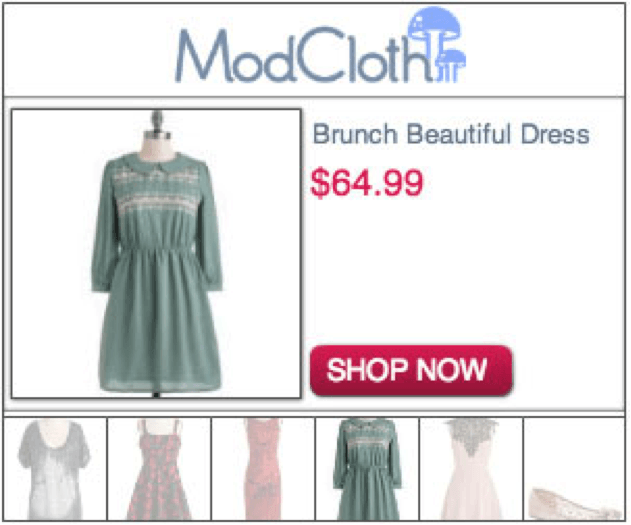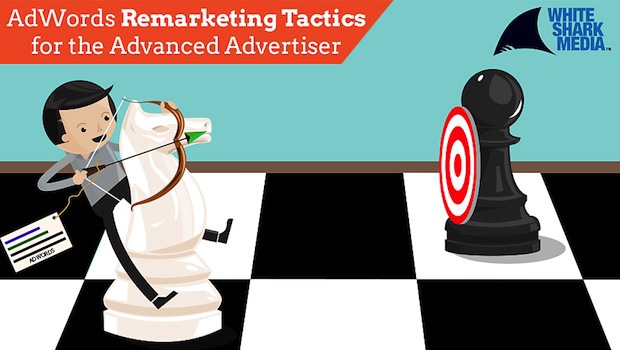One area I have seen a lot of success with lately is remarketing. Google has improved their remarketing features tremendously over the last year. Today, I will share the most successful remarketing tactics I’ve found in various AdWords accounts throughout the years.
Remarketing is not as simple as starting regular AdWords Search or Display campaigns. The success of your remarketing campaigns eventually depends on how well you’ve set up your remarketing lists and how you’ve tagged your website.
I won’t go too much into detail with tagging your website, but if you don’t have your tag installed yet, I recommend reading the basics first.
Remarketing can be extremely powerful for the savvy advertiser, but because remarketing depends on having people to remarket to, you can’t expect success in all industries. Remarketing is most powerful for companies with a lot of visitors to their website. The more visitors you get, the better results you will see from remarketing.
This doesn’t mean if you receive few visitors (less than 10,000 per month), you shouldn’t do remarketing. However, with few visitors your success criteria shouldn’t be direct response, but instead be focused on touching prospects again and again with your ad message. With fewer visitors, your costs from your remarketing campaigns will be limited. Therefore, running your campaigns with no conversions shouldn’t pose a challenge.
Currently, Google offers 3 ways to do remarketing:
- Remarketing Lists for Search (RLSA)
- Dynamic Display Remarketing
- Display Remarketing
Remarketing Lists for Search
Remarketing Lists for Search (RLSA) is Google’s remarketing tool. It allows you to target people who have previously been on your site directly in their search results.
For a long time, you were only able to remarket to people on the Display Network and were therefore missing one of the key benefits of remarketing.
One of the easiest ways to get started with RLSA campaigns is to take your 10-20 highest performing ad groups and copy them into a new campaign. In your new campaign, you set up your remarketing audience as needed and set the same audience as negative in your existing campaigns.
That’s essentially all it takes to get started with RLSA campaigns. For more details I recommend reading my fellow SEJ contributor Tyler Jordan’s post on RLSA campaigns.
What are the benefits of remarketing?
- Target more generic keywords
- Bid higher than in your regular campaigns
- Offer special incentives for repeat purchasers
Target Generic Keywords
With normal search campaigns, you only have the ability to decipher the intent behind a search by looking at the keywords used. You therefore need to use highly specific keywords to assure that you achieve a profitable ROI instead of just pouring money down a black hole.
With RLSA campaigns, you get a second parameter to use – The fact that customers have been on your website before and therefore are more likely to make a purchase. Where you previously would have only targeted keywords like ‘large cotton bath towels’ because your store specializes in these towels, you can now try out generic search terms like:
- Bath towels
- Buy towels
- Cheap towels
Seeing that the person searching for these phrases has already been to your site and shown interest in your products, these keywords all of a sudden become relevant. It is important to know is that customers don’t always follow a linear search pattern.
Customers will sometimes start off with a broad search, then a specific search and later try a broad search again. Let me provide you with an example of a search pattern:
- Best bath towels for kids
- Bath towels with hoods
- Cheapest towels
- Cotton bath towels with hoods
- Disney hooded bath towel = Conversion!
The customer might choose to convert at any time during a search pattern like this, so making sure that you appear all the way through is critical if you truly want success with AdWords. Prior to having the opportunity to use RLSA campaigns, you would never think of using a keyword like cheapest towels. It’s simply just too broad for many advertisers and many high-end bath towel sellers don’t even want to appear for this keyword.
However, with the intent behind the search now clear, you are able to open the gates to this keyword and others keywords you previously turned down.
Bid Higher Than In Your Regular Campaigns
Knowing a customer has been to your site before and chose to search further for one of your products is a big sign that they are continuously interested in the product line that you are offering. However, even though customers visit and navigate, it does not guarantee they will make a purchase. There can be several reasons why a searcher chooses not purchase from you right away.
A common scenario is that a searcher just wants to see what else is out there. If they see your ad on top during their follow-up searches, the likelihood of them eventually choosing you is higher.
Another scenario is that the searcher might have not find exactly what he was looking for on your site due to infrastructure problems. Web users have low attention spans, so if someone didn’t find what they was looking for quickly, he might just try to search on Google instead. By targeting all your products with RLSA campaigns in the top two position, you will be able to redirect that person back to your site.
Therefore, in many cases, you are able to bid significantly higher in your RLSA campaigns than your traditional search campaigns.
Offer Special Incentives For Repeat Purchasers
A great tactic for getting the most out of RLSA campaigns is to try out new ad messages. By definition, the searchers who see your RLSA ads will already have seen your original ads. Try different ad messages to nail down further benefits of choosing your site to do business with.
I often have the challenge of trying to fit in as many benefits as I can in my clients’ AdWords ads, but it’s impossible to fit them all. I therefore list all benefits on a list in Excel and try out different benefits to see which one converts better.
I recommend that you do the same with RLSA campaigns. Don’t just assume that your current ad message is the best, but instead focus on evolving your ad message and allow repeat users to see the entire spectrum of benefits.
Focus on Educating Leads Rather Than Converting Leads
When it comes to e-commerce, there is nothing wrong with trying to convert a customer again and again. More conversions mean more money in the bank. However, within lead generation you don’t get any value from duplicate leads.
If you are running high enough numbers, you can choose to show ads for educative content to leads that are already in your database. Instead of showing an ad where you pitch a prospect to “Get a Free Evaluation”, instead focus on “Discover Our Proprietary Techniques” or “Read Testimonials from 58 existing Customers”.
Dynamic Remarketing Using Product Listing Ads
Dynamic Remarketing is the latest feature from Google in the world of remarketing. Dynamic Remarketing uses your Google Shopping feed to show specific products to users who have previously visited those products on your website.
Let’s say I have visited RobeMart.com (disclosure: they are a client) to find a bathrobe for my 6-year old. I chose not to buy the one I was looking at. When I then start browsing other websites, Dynamic Remarketing will show the specific product to me again and again in the same style as regular Product Listing Ads:

The ads include an image of the product as well as the price. There are several different layouts that you can choose from, but in general the ads look good and are super easy to set up.
The best practices for Dynamic Remarketing is the same as regular remarketing:
- Bid higher the further down the funnel a user is
- Remember frequency capping
- Always include an image in your remarketing ads
- Start with broader segments, but remember to segment
Dynamic Remarketing is definitely one of the most promising features I’ve seen from Google lately, and I’ve seen surprisingly good results from running the campaigns in several industries.
Advanced Strategies for Display Remarketing Success
You might think that regular display remarketing has become obsolete with the addition of Dynamic Remarketing, but traditional remarketing still lives strong. Remarketing is an exceptional way to extend your reach to motivated users who have already shown interest in you.
Split Up Your Remarketing for Different Groups
Segmenting your remarketing targeting in different groups is one of the most best way to improve your performance. Don’t treat all customers the same. You can set clear layers of commitment to determine how aggressive you should remarket to each segment.
For an e-commerce store, my advice is to start out with the following segments:
- All Visits (Excluding the rest of the segments)
- Category Visits
- Product Visits
- Abandoned Shopping Carts
- Converted
With these 5 segments, you will be able to see a clear difference in CTR and conversion rates starting with high conversion rates for ‘Abandoned Shopping Carts’ to low conversion rates for ‘All Visits’.
Match Your Cookie Time To Your Specific Customer Behavior
If you sell a small gadget that customers decide whether to purchase or not within a day, don’t set a 365-day membership duration for your remarketing lists.
Make sure that your membership duration matches your common buying funnel.
Don’t Forget Frequency Capping
Have you ever been followed by the same ad from the same company all day, every day? I have. A lot. You know what? It doesn’t work. Yelling at me more doesn’t make me like you better.
Frequency capping effectively limits how often your ads should show to the same user per day or week.
Change Ad Message For Non-Converting Users After Time
Let’s assume that your typical customer either buys on day 1 or day 10 of visiting your site. Instead of having the same ad message running after day 10, I would recommend trying to change your ads to focus on new incentives.
If your Free Shipping benefit hasn’t convinced your customer by day 10, it probably won’t convince them on day 20. Consider changing your benefit or include a specific offer and you will possibly experience greater results.
Remarket To Your Converted Customers
If you have excluded your converted customers from your remarketing, you have followed a common best practice. However, the advice shouldn’t end there. You still need to use your existing customers to continue your marketing. Both in Display and in Search, it can be highly beneficial to retarget them in due time.
If you sell a product like fashion or other products that can be sold year round, it’s tough to decide exactly when you need to start retargeting to existing customers. If you have a clear season or if your products have an expiration date, you will be able to retarget very efficiently.
- Are you planning an upgrade to a certain item in 6 months? Retarget.
- Do your wallets tend to get worn out after 12 months? Retarget 50% off for repeat customers after 12 months.
- Do you sell swimwear? Increase your membership duration so it covers until the next season and bid aggressively.
Focus On Other Conversions Than Direct Response
One of the things I see with B2B is that many people say remarketing doesn’t work. Often this is due to low visitor numbers, mainly because getting a 2% conversion rate off 500 remarketing clicks only results in 10 extra leads per month. 10 extra leads aren’t something many would be that excited about.
However, what if you could convert 10 or 20% into your email nurturing process or sell a product with lower value to get the customers email?
What about advertising your blog or other areas that could possibly turn into a bigger profit for you over time?
Consider other options when doing remarketing and you will see your opportunities open significantly.
Consider Including Calls As Part of Your Remarketing KPIs
A technique I tested throughout the last part of 2013 was to focus on calls as part of my KPIs for lead generation remarketing campaigns. I saw a lot of the people who didn’t convert on a traditional lead capture form saw amazing conversion rates once I changed the landing page to one focusing on generating calls instead.
We also split-tested the original landing page to see if the performance increase was simply due to our prospects wanting to have a number to call, but the conversions stayed the same.
With a remarketing campaign following up with an ad message like ‘Get A Rep On The Phone Within Two Minutes – Call Now’, I have been able to increase the overall lead generation from AdWords by a healthy amount in several accounts.
Should I Count View-Through Conversions?
I rarely use View-Through conversions as a KPI. In my experience, they don’t bear much resemblance to the actual reality of things. View-Through conversions are mainly a way for older advertising agencies to take credit for other people’s work.
I don’t use them.
Know that Your Regular Search/Display Campaigns Are Also Remarketing Efforts
With Remarketing for Search, Dynamic Remarketing, and Regular Remarketing you will tend to see lower CPAs than you see with your regular Search and Display campaigns.
As you start RLSA campaigns, you might even see an increase in your cost per conversion for your regular search campaigns. I’ve seen time and time again that clients either want to or choose to allocate more budget towards remarketing with little knowledge of the eco-system.
Remarketing efforts depend 100% on your other advertising. If currently you don’t have any traffic on your site, you will have no customers to remarket to. Remember that you need relevant traffic in the first place for your remarketing efforts to work. Only by retargeting relevant visitors will your remarketing efforts be profitable.
Align your expectations across the board and know that if your overall campaigns are performing well for you, then there is no reason why you should lower your traditional search budget.
Image 1 Credit to White Shark Media 02/12/14
Image 2 Credit to http://www.google.com/think/products/dynamic-remarketing-for-retail.html




